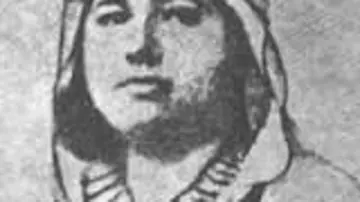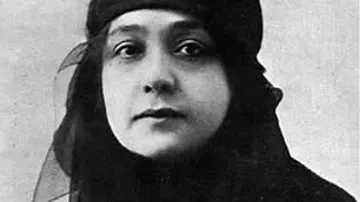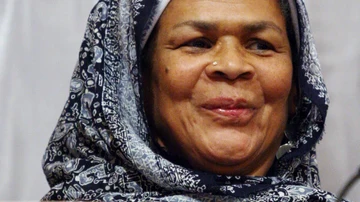There is not only one feminism, there are many. He feminism What is normally talked about is what the history of the West has taught us, but there are women from non-Westernized contexts who have had to face a different evolution of their claim. It will seem that their struggle is the same and broadly it is, but the sociopolitical and cultural context has determined a completely different course. Muslim feminism is also feminism and here the lives of five key women who have marked its history are told.
Malak Hifni Nasif (1886-1918)
One of the most prolific Egyptian writers was Hifni Nasifwoman and poet who wrote in 1909 a book with more than seventy articles in magazines and newspapers in which her interpretation of what was called, at that time, the female question was collected. He criticized the prevailing polygamy, forced marriage, defended the right of women to a good education— a key issue for the first generation of Muslim feminists — and she dedicated herself body and soul to unraveling the issue of the veil, which was already arousing much controversy at that time, according to Professor Nieves Paradela, an expert in Arab Studies, in her article ‘Arab feminism and its struggle for women’s rights’.
The issue of the veil was always very controversial in Muslim culture and Malak made it clear between his pages. The ‘unveiling’ represented for her the birth of a new woman and many of her also thought the same, especially those belonging to a literate upper class. However, this idea only remained in the thoughts of many women because tradition did not allow it and many of them decided to bury their ideas in the silence of history, although others (few) preferred to continue fighting.

Malak Hifni Nasif | Public domain
Huda Shaarawi (1882-1947)
During this first feminism, an Egyptian woman dedicated throughout her life to fighting for women’s education was revealed and her name was Huda Shaarawi. One of his key thoughts was that education should be aimed at women participating in the public life of the cities. To this end, she managed to hold meetings at the Egyptian University (founded in 1908) before anyone else, created the Women’s Intellectual Association and participated along with many others in the demonstration of independence from the United Kingdom, as exposed by the researcher Bárbara Azzaola Piazza. This event marked the beginning of the public participation of Muslim women, demanding their status as citizens and free women.
The culmination of her career was when she founded the Egyptian Feminist Union in 1923, with which she represented her newly independent country at a feminist congress held in Rome. From then on, and after revealing herself during the days she spent in the Italian city, she Huda she abandoned the veil and marked a milestone in the history of the Arab feminist movement.

Photography by Malak Hifni Nasif | Public domain
Durriya Shafik (1908-1975)
Despite Huda Shaarawi’s struggle, Egypt continued to have many problems, mainly with regard to education and work. In addition, the State did not grant them any political rights, they did not have the right to vote and family law discriminated against them without consideration. It was at this time that women began to raise their voices, through forums, the press, and feminist associations, while their demands were being heard in other Muslim countries.
In this context, highlighted the figure of Durriya Shafik, a woman with a doctorate at the Sorbonne University and whose struggle especially aimed at obtaining political rights, mobilizing many women in front of Parliament. In 1952 she created the association ‘La hija del Nile’ with which he decided to stand for election, but this attempt failed. Thanks to her ideas that spread throughout the Arab world in the following decades, a revolutionary and powerful feminism was lived.

Doria Shafik | Public domain
Nawal al-Saadawi (1931-2021)
Nawal al-Saadawi was born in 1931 but his ideas caught on, especially in the 1970s. She was a doctor by profession and represented the Muslim feminist movement of demanding and secular origin. The most important ideas of hers had to do with the debate on women and sex in Arab societies, with her book ‘Woman and Sex‘. She also had a period of great demand thanks to the co-founding of the Arab Association for Human Rights and the official creator of the Association for Solidarity with Arab Women to obtain rights for women, according to Paradela.
Unfortunately, with the birth of radical Islamic groups, he had to go into exile from the country until years later he was able to return. But the damage had already been done and what was thought to be a residual movement began to become the mainstream discourse, whose motto was ‘Islam is the solution’; for women it marked the beginning of what years later would be called “Islamic feminism”.

Photography by Nawal al-Saadawi | flickr
Amina Wadud (1952- Present)
After secular protest feminism was replaced by Islamic feminism, based mainly on postcolonial theories and cultural conceptions, this one strongly criticizes its predecessor as a neocolonial movement and advocates for the defense of women’s liberation through their culture, rooted in religion and a return to Islam.
One of the women who defends this movement is Amina Walud (1950). She converted to Islam, she was a professor at the University of Michigan where her ideas permeated the Muslim population due to strong activism and her defense to carry out the ‘imamato’ (collective prayer) by women and which has already tried to do so in New York and Oxford, according to the study ‘Feminisms in Arab societies’ by Eva Lapiedra Gutiérrez. This movement that she defends will not be a feminism as we understand it in the West, rather it could be said that it is a theological feminism that is based on women as an egalitarian subject in the Muslim religion and that criticizes the prevailing patriarchy of the religion.

Photography by Amina Wadud | flickr
The issue of the veil today
With the advent of Islamic feminism, the idea of ’unveiling’ begins to be abandoned and its opposite movement takes place, the so-called ‘veiling’. This return to the veil by Muslim women, according to the academic Nieves Paradela, was promoted by a traditionalist and patriarchal justifying discourse whose objective was “the protection of the personal and family morality of women against the commodification of the body that is experienced in the West ” that had a strong impact on Muslim society.
After a while, and with the weight of the new generations, the discourse began to change, above all, due to contact with other cultures. The discourse on the modesty and covering of women for their moral protection is abandoned and the veil became just a symbol of Islamic clothing. In this way, Muslim women began to claim the veil not as an example of coercion but as an expression of a freely chosen identity and, in the words of Paradela, “an example of the right to reject the values of some cultures that had been imposed on others.” . This fact was also claimed by the activist Wassyla Tamzali, woman of Muslim culture, feminist and secularist against the French headscarf law of 2003, but who also criticized Islamic feminism as a form of patriarchal control over women.
Source: Lasexta
Bruce is a talented author and journalist with a passion for entertainment . He currently works as a writer at the 247 News Agency, where he has established himself as a respected voice in the industry.












